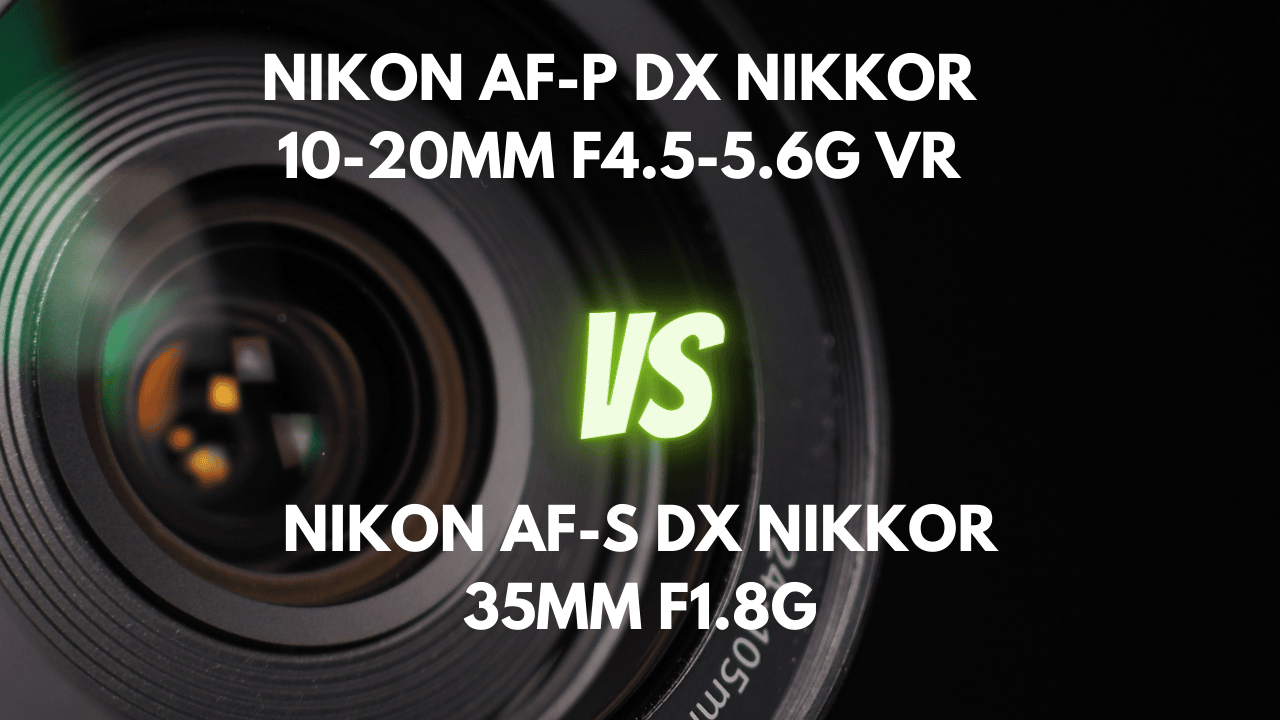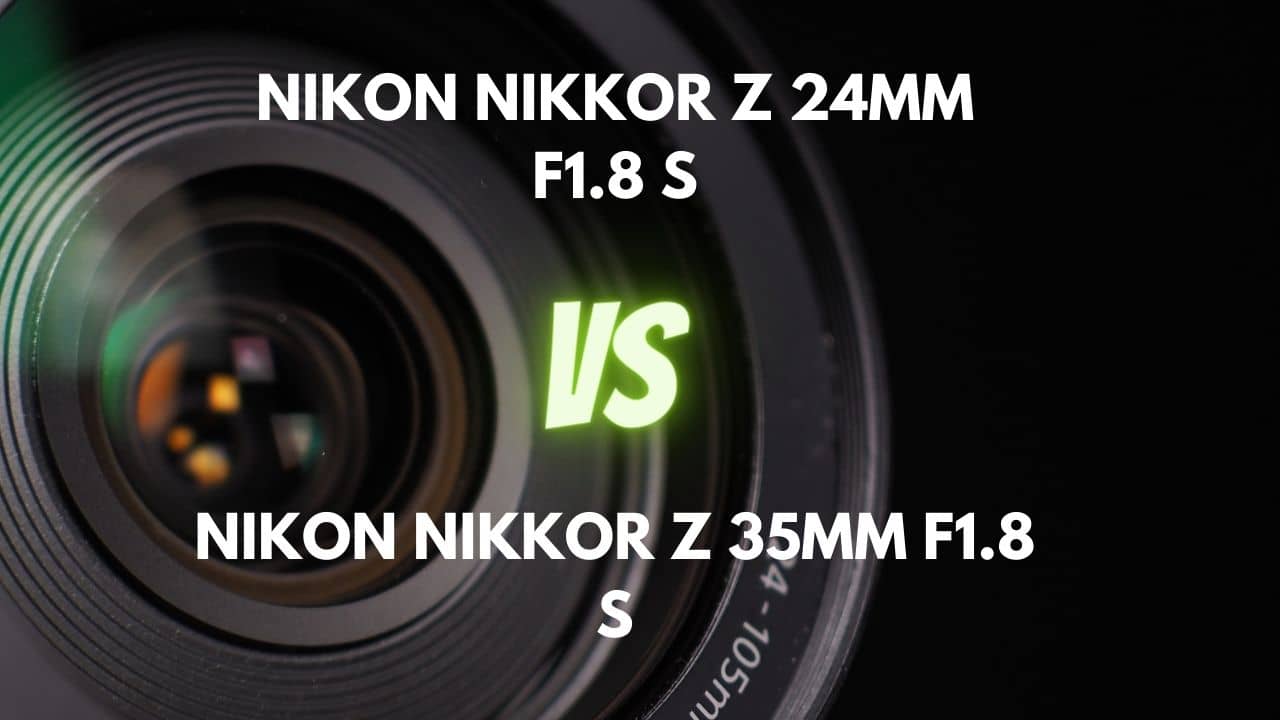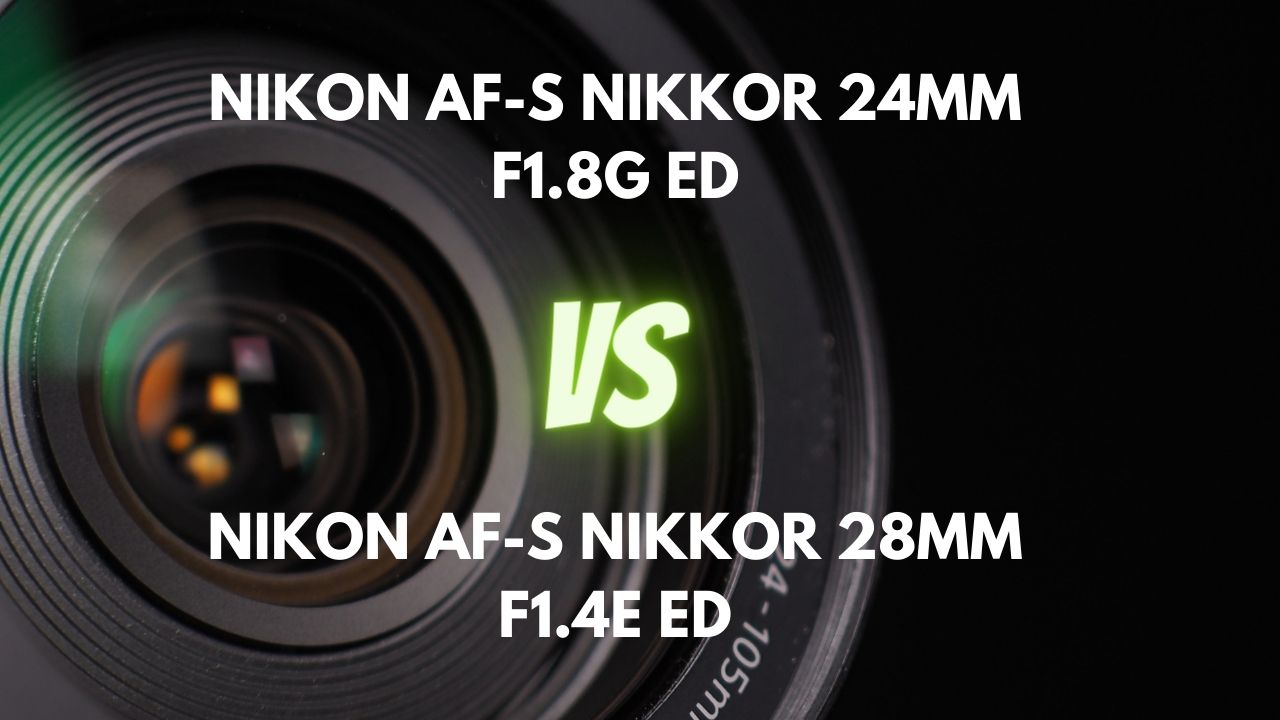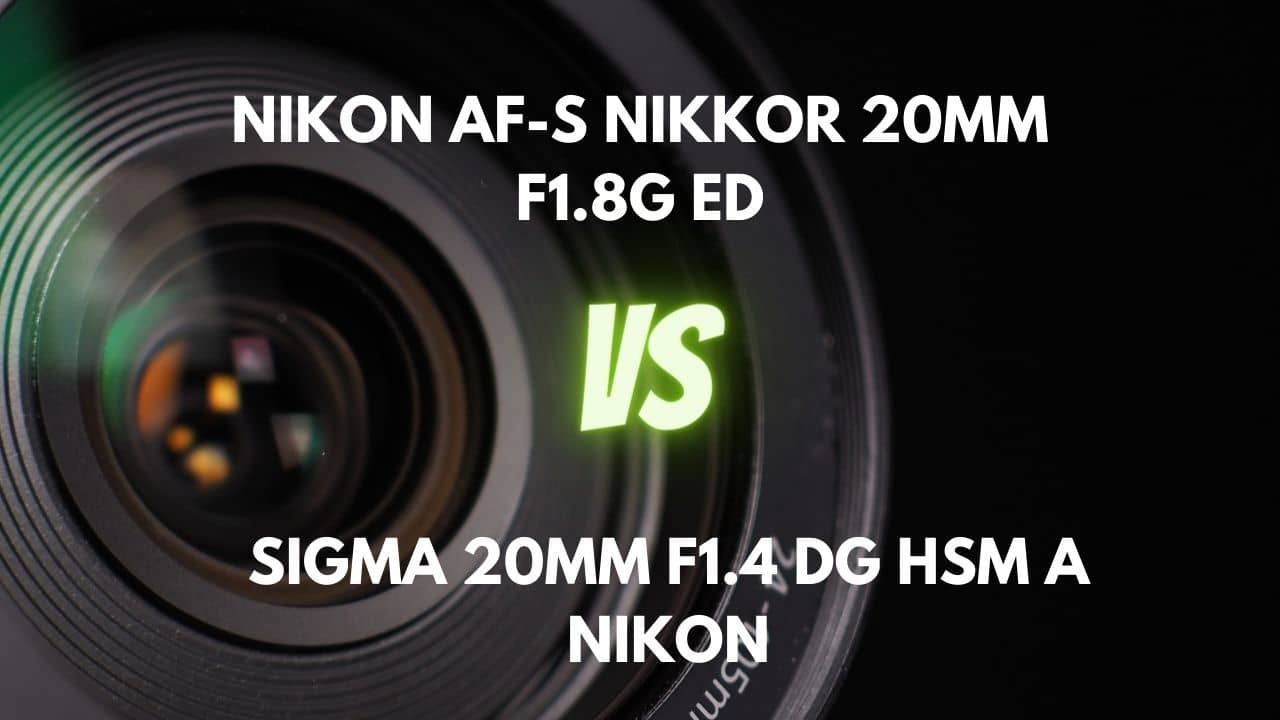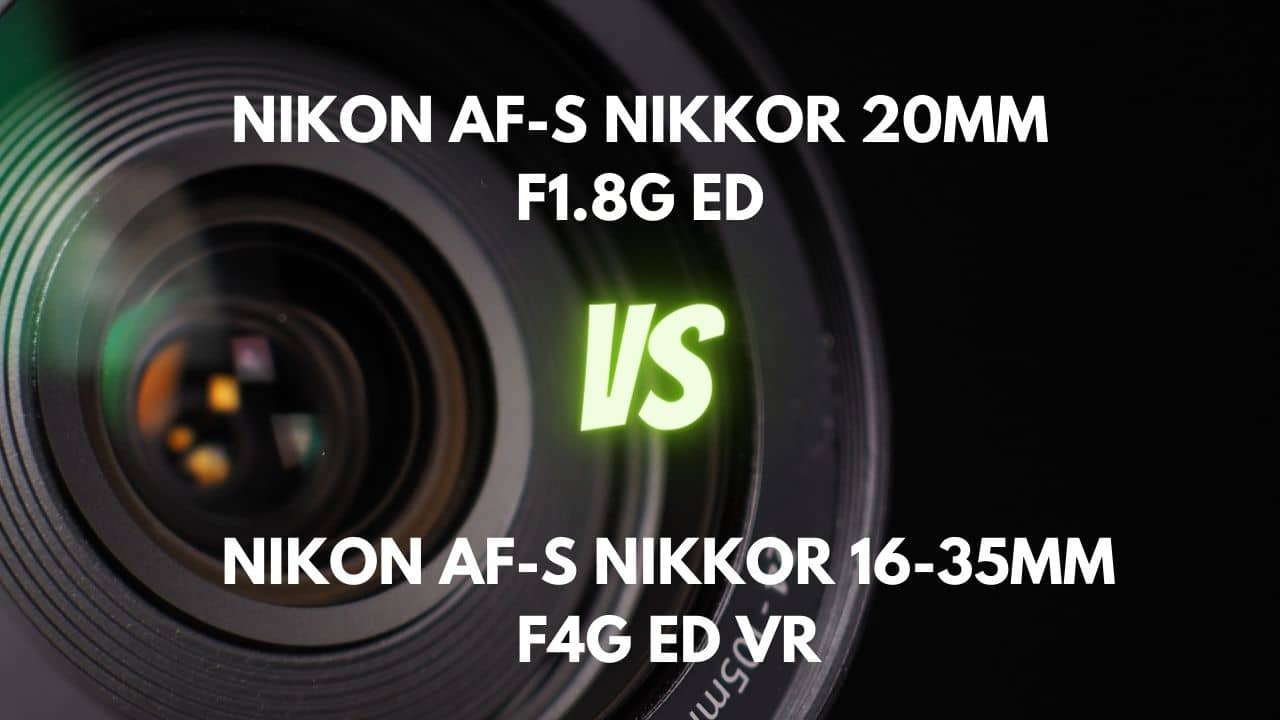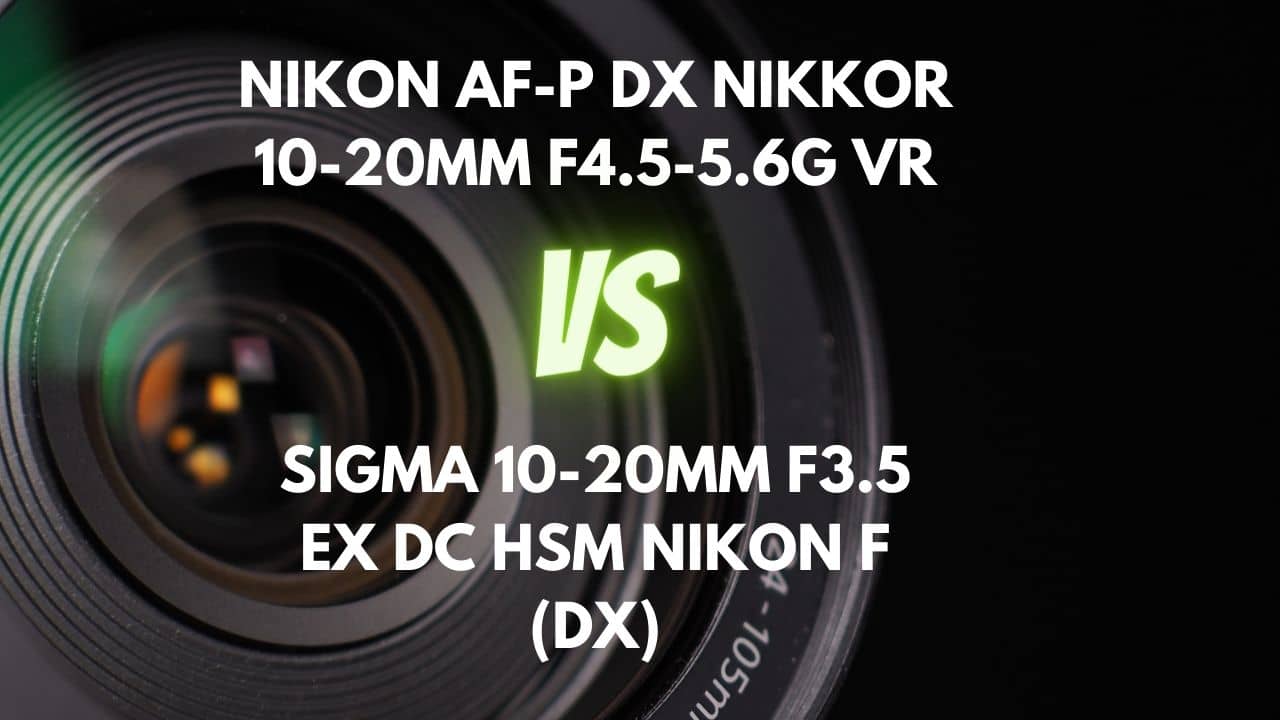Are you on the hunt for the perfect ultra-wide-angle lens to capture breathtaking landscapes, dramatic architecture, or immersive interiors? Your search ends here, as we present to you a detailed comparison of two highly sought-after contenders in the market: the Nikon AF-S DX NIKKOR 10-24mm F3.5-4.5G ED and the Sigma 10-20mm F3.5 EX DC HSM Nikon F (DX). These lenses have become staples in many photographers’ kits, offering the ability to capture stunning images with a unique perspective that only wide-angle lenses can provide.
In this article, we will delve into the nitty-gritty details of each lens, exploring their performance, usability, and value for money. From the avid traveler seeking lightweight gear to capture memorable moments, to the professional architectural photographer demanding superior optical performance, we understand the diverse use cases and requirements that photographers have when selecting their ideal wide-angle lens.
Join us as we dissect every aspect of these two remarkable lenses, revealing their strengths and weaknesses to help you make an informed decision and elevate your photography to new heights. No matter your skill level or specialization, this comprehensive comparison will shed light on which lens might be the perfect fit for your creative endeavors. So, buckle up and get ready to embark on an enlightening journey into the world of ultra-wide-angle photography.
Overview
| Nikon AF-S DX NIKKOR 10-24mm F3.5-4.5G ED | Sigma 10-20mm F3.5 EX DC HSM Nikon F (DX) | |
|---|---|---|
| Max Aperture | F3.5-4.5 | F3.5 |
| Aperture Type | Variable | Fixed |
| Focal Range (mm) | 10-24 | 10-20 |
| Mount Type | Nikon F (DX) | Nikon F (DX) |
| Zoom Ratio (X) | 2.4 | 2 |
The Nikon DX 10-24mm f/3.5-4.5 features a variable aperture of f/3.5-4.5 and a focal range of 10-24mm, while the Sigma 10-20mm f/3.5 offers a fixed aperture of f/3.5 and a focal range of 10-20mm. Both lenses are designed for Nikon F (DX) mount cameras and offer wide-angle capabilities.
The Nikon lens has a slightly larger zoom ratio (2.4x) compared to the Sigma lens. However, its variable aperture may affect low light performance and image quality consistency across the zoom range. On the other hand, the Sigma lens offers better low light performance due to its fixed aperture, which remains constant throughout the entire focal range.
For landscape and architectural photography, where a deep depth of field is often desired, the difference in aperture may not be a significant factor. However, the Nikon’s extended focal range could provide more versatility in composing your shots.
In terms of distortion and vignetting, wide-angle lenses with larger apertures, like the Sigma 10-20mm f/3.5, may show more distortion at the widest focal lengths, which can be corrected in post-processing.
Considering size, weight, and cost, lenses with larger apertures are generally bigger, heavier, and more expensive. However, the specific requirements and intended use of the lens will ultimately determine which is a better fit for your needs.
In conclusion, the Nikon lens offers a greater focal range and is more versatile for various compositions, while the Sigma lens provides better low light performance and image quality consistency due to its fixed aperture. Depending on your specific needs and priorities, one of these lenses may be a better fit for you.
Design and Ease of Use
| Nikon AF-S DX NIKKOR 10-24mm F3.5-4.5G ED | Sigma 10-20mm F3.5 EX DC HSM Nikon F (DX) | |
|---|---|---|
| Diameter x Length (mm) | ⌀82.5×87mm | ⌀87×88mm |
| Weight (gr) | 460 | 520 |
| Filter Thread (mm) | 77 | 82 |
| Zoom Method | Rotary (internal) | Rotary (extending) |
| Distance Scale | No | Yes |
| DoF Scale | Yes | No |
| Hood Supplied | Yes | Yes |
The Nikon DX 10-24mm f/3.5-4.5 has a diameter of 82.5mm and a length of 87mm, while the Sigma 10-20mm f/3.5 is slightly larger with a diameter of 87mm and a length of 88mm. The Nikon lens is also lighter, weighing 460 grams compared to the Sigma’s 520 grams.
In terms of portability, the Nikon lens is more compact and lightweight, making it easier to carry around and less tiring during extended shooting sessions. The smaller size and lighter weight of the Nikon lens also contribute to better balance with the camera, allowing for more comfortable handling.
The two lenses differ in their zoom methods, with the Nikon featuring an internal rotary zoom and the Sigma using an extending rotary zoom. The internal rotary zoom of the Nikon lens maintains a constant physical size when zooming, which can be beneficial for weather sealing, balance, and overall handling. However, it may be more complex and potentially heavier due to the additional mechanics. On the other hand, the Sigma’s extending rotary zoom has a simpler design and may be lighter, but it could be more cumbersome to handle as the lens physically extends when zooming, and weather sealing might be more challenging to achieve.
In conclusion, the Nikon lens stands out as the superior lens in terms of dimensions and weight, offering greater portability, balance for various shooting situations. Additionally, the internal rotary zoom method provides consistent handling and better weather sealing, making it a more versatile and user-friendly choice compared to the Sigma lens.
Lens Mount and Barrel
The Nikon DX 10-24mm f/3.5-4.5 features a lens mount made of dull-chromed brass with a rubber seal, providing protection against dust and moisture. It also has a bayonet mount mark and a mark on the case for quick installation of the included plastic HB-23 hood. The lens barrel is crafted from durable polycarbonate material and sports a matte black texture finish. This combination of materials strikes a balance between durability, weight, and cost.
In contrast, the Sigma 10-20mm f/3.5 has a metal lens mount. The lens barrel is a blend of metal and plastic with a smooth satin black finish. This combination provides strength and sturdiness, along with a more premium, professional feel.
Comparing the two lenses, the Nikon lens offers better protection against dust and moisture with its rubber seal. Its polycarbonate lens barrel makes it a more lightweight and portable option, although it may not be as durable as the metal components found in the Sigma lens. The Sigma lens, on the other hand, offers a more premium feel with its metal lens mount and barrel. However, it is heavier and less portable due to the metal components.
In conclusion, neither lens mount and barrel combination is necessarily superior to the other, as it ultimately depends on your specific needs and preferences as a photographer. If you prioritize portability and protection against dust and moisture, the Nikon lens might be the better choice. However, if you value durability and a more professional feel, the Sigma lens could be the way to go.
Weather Sealing
The Nikon DX 10-24mm f/3.5-4.5 features a weather sealing rubber seal around its lens mount, providing a degree of protection against dust and moisture. However, it lacks internal seals at the rings or switches, which means it is not fully weather-sealed.
On the other hand, the Sigma 10-20mm f/3.5 does not have a weather sealing gasket at the lens mount nor internal seals at the rings, switches, or front of the barrel. This lack of sealing implies that the lens is not weather-sealed at all.
Weather sealing is crucial for photographers who frequently shoot outdoors or in harsh conditions, as it provides better protection, durability, and performance. Fully weather-sealed lenses can withstand dust, moisture, and light water splashes, ensuring consistent functionality and longevity.
Comparing the two lenses, the Nikon lens offers a level of weather sealing, albeit not complete, with its rubber seal around the lens mount. This partial sealing provides some protection against dust and moisture, making it better suited for outdoor photography than the Sigma lens, which lacks weather sealing altogether.
In conclusion, the Nikon lens has superior weather sealing compared to the Sigma lens. Although not fully weather-sealed, the Nikon lens offers some degree of protection, making it a better choice for photographers who shoot outdoors or in challenging environments. However, for optimum protection in extreme conditions, it’s essential to consider investing in a fully weather-sealed lens.
Rings
The Nikon DX 10-24mm f/3.5-4.5 boasts 2 rings: a wide zoom ring and a narrow focus ring. The ridged, rubberized zoom ring is positioned towards the front of the lens and rotates smoothly without zoom creep. The focus ring, narrower in design, lacks hard stops at either end of the focus range.
Both rings offer tactile and ergonomic handling, with the zoom ring requiring about 60° of rotation to cover the entire focal length range. The lens extends as it’s zoomed, and the focus ring takes approximately 90° of rotation to run through the focusing range. A windowed distance scale is present, but there’s no depth-of-field scale or marks for infrared photography. The lens lacks an extension lock switch on the zoom ring.
In contrast, the Sigma 10-20mm f/3.5 also features 2 rings: a zoom ring and a focus ring. The larger zoom ring, made of rubber with deep ribbing, is located closer to the body mount and takes about 25 degrees of rotation to run through the focal length range. The focus ring, thinner and also rubberized with deep ribs, is positioned near the front element and has soft stops at infinity and closest focus.
The lens has a distance scale under a clear window but lacks depth-of-field markings or an infrared index. Manual focus is convenient, and the lens focuses past infinity. The zoom ring rotates in the opposite direction of Canon lenses and is easier to twist than the focusing ring. The lens also lacks an extension lock switch on the zoom ring and a hard stop at infinity focus.
Comparing the two lenses, the Nikon lens offers a more ergonomic and tactile experience with its rings, while the Sigma lens provides smooth rotation with the right amount of resistance. Although both lenses lack hard stops and extension lock switches, the Nikon lens has a more extensive focus throw, providing finer control over focus adjustments.
In conclusion, the rings on the Nikon lens appear to be superior, offering a better balance of ergonomics, precision, and control. While the Sigma lens also has its merits, photographers seeking a more refined experience when adjusting focus and zoom may find the Nikon lens more satisfying.
Switches/Buttons
The Nikon DX 10-24mm f/3.5-4.5 is equipped with a focus switch labeled ‘M/A – M,’ enabling auto focus while allowing constant manual focus priority. This feature provides photographers with the flexibility to fine-tune their focus while still benefiting from the convenience of auto focus. However, the lens does not offer any other switches or buttons.
On the other hand, the Sigma 10-20mm f/3.5 features an AF/MF switch located on the left side, which easily toggles between auto focus and manual focus modes. This switch is praised for its well-placed and crisp operation. Similar to the Nikon lens, the Sigma lens does not have any additional switches or buttons.
In conclusion, the Nikon lens and Sigma lens both offer minimalistic switch/button designs, with a single focus mode switch.
Filter Thread
The Nikon DX 10-24mm f/3.5-4.5 features a 77mm filter thread made of plastic, which may not be the most durable option but is lightweight. Its internal focusing system ensures that the front element and filter thread do not rotate on focus, making it convenient to use with polarizers and graduated neutral density filters. However, due to the wide-angle nature of the lens, thin filters might be necessary to avoid vignetting.
In contrast, the Sigma 10-20mm f/3.5 has a larger 82mm filter thread, also made of plastic. This size can be more expensive, but it can accommodate filters with a thick rim without issue. The filter ring does not rotate, allowing for easy use of various filters. However, using slim polarizers on the front element can be challenging, as it is almost inset into the rim of the lens hood.
In conclusion, both lenses offer non-rotating filter threads, which is beneficial when using various filters. The Nikon lens has a smaller filter thread size, making it potentially more cost-effective and compatible with a wider range of filters. On the other hand, the Sigma lens has a larger filter thread size, which may accommodate thicker filters but could be more expensive. Considering these factors, the Nikon lens comes out ahead with its more common 77mm filter thread size and compatibility with a wider range of filters.
Lens Hood
The Nikon DX 10-24mm f/3.5-4.5 comes with a petal-shaped HB-23 plastic bayonet hood, which is included in the package. This lens hood has a smooth matte interior finish, which helps reduce light reflections and maintain image contrast. The petal-shaped design also allows for better grip and handling during installation and removal.
On the other hand, the Sigma 10-20mm f/3.5 includes a plastic petal-shaped lens hood that attaches to the lens using a bayonet mount. This lens hood is designed with arrows labeled “IN” and “OUT” to indicate the correct installation direction, and it can be reversed for storage. However, some users have reported that the hood may not lock securely in place, which can cause mechanical vignetting in pictures. Despite this issue, others find the lens hood useful for providing slight protection from bright light sources.
In conclusion, both lenses come with petal-shaped lens hoods that offer protection from bright light sources and help reduce light reflections. However, the Nikon lens has an edge with its smooth matte interior finish and secure bayonet attachment. The Sigma lens hood’s potential locking issue can impact its overall effectiveness.
Focusing and Optical Stabilization
| Nikon AF-S DX NIKKOR 10-24mm F3.5-4.5G ED | Sigma 10-20mm F3.5 EX DC HSM Nikon F (DX) | |
|---|---|---|
| Autofocus | Yes | Yes |
| AF Motor | Ultrasonic | Hyper Sonic Motor |
| Rotating Front Element | Does not rotate on focusing | Does not rotate on focusing |
| Min Focus Distance | 0.24m | 0.24m |
| Max Magnification (X) | 0.2 | 0.15 |
| Full-Time Manual Focus | Yes | Yes |
| Focus Method | Internal | Internal |
Focusing Performance
The Nikon DX 10-24mm f/3.5-4.5 boasts fast and virtually silent autofocus performance, thanks to its SWM motor. This lens focuses accurately and features a close-focus point of 24cm, making it ideal for landscape and architectural photography where foreground interest is important. The manual focus action is smooth, providing just the right amount of resistance for fine adjustments.
Additionally, its internally focusing design ensures a constant lens length and prevents the front element from rotating during focusing, making it suitable for use with polarizers or graduated neutral density filters.
On the other hand, the Sigma 10-20mm f/3.5 delivers fast and near-silent autofocus operation, courtesy of its HSM focusing motor. This lens allows for override at any time by turning the focus ring and maintains a non-rotating front element during focus. With impressive autofocus speed and accuracy, the Sigma lens performs admirably in low-light situations and on Nikon DX DSLRs.
The lens also offers a Full-Time Manual Focus mode and a rubberized focus ring that turns approximately 135 degrees. Though it doesn’t produce much noise when focusing, the focusing motor’s noise can be audible on videos recorded using the camera’s built-in microphone.
In conclusion, both the Nikon and the Sigma exhibit impressive focusing performance, with fast and accurate autofocus systems and convenient manual focus options. However, the Nikon lens has a slight advantage with its shorter close-focus point and smoother manual focus action. The Sigma lens, while offering great performance, has a minor drawback with its audible focusing motor noise during video recording.
Optical Stabilization
Both the Nikon DX 10-24mm f/3.5-4.5 and the Sigma 10-20mm f/3.5 lack optical stabilization. While optical stabilization is less critical for wide-angle lenses, it can still be beneficial in certain situations, such as handheld shooting in low-light conditions or when recording video.
Despite the absence of optical stabilization in both lenses, it’s essential to be cautious with shutter speeds when using them handheld, particularly in low-light situations. Modern cameras with in-body image stabilization (IBIS) can effectively work with wide-angle lenses like these to minimize the effects of camera shake, even without built-in optical stabilization. Additionally, using a tripod or a fast lens with a larger aperture can be more effective tools for achieving stability and sharpness when shooting with wide-angle lenses.
In conclusion, neither the Nikon nor the Sigma offers superior optical stabilization, as both lenses lack this feature. However, depending on your camera and shooting situation, other stabilization methods such as IBIS, tripods, or faster lenses can still help achieve sharp images and smooth footage without the need for optical stabilization in the lens itself.
Image Quality
| Nikon AF-S DX NIKKOR 10-24mm F3.5-4.5G ED | Sigma 10-20mm F3.5 EX DC HSM Nikon F (DX) | |
|---|---|---|
| Special Elements | 2x ED glass elements and 3x aspherical lens elements | 1 SLD glass element 2 ELD glass elements 2 glass mold aspherical elements 2 hybrid aspherical elements |
| Diaphragm Blades | 7 | 7 |
Aberration
The Nikon DX 10-24mm f/3.5-4.5 and Sigma 10-20mm f/3.5 both exhibit chromatic aberration, but the severity and behavior differ.
For the Nikon lens, chromatic aberration is most noticeable at the widest focal length (10mm) and when used wide open at the longest focal length (24mm). The aspherical element in the lens helps control lens flare and coma, which can reduce contrast. Interestingly, the choice of aperture doesn’t significantly influence the presence of chromatic aberration, except at 24mm. Additionally, recent Nikon camera bodies can automatically detect and remove most chromatic aberrations through their smart JPEG processing engines.
On the other hand, the Sigma lens displays varying levels of chromatic aberration depending on the focal length and aperture used. At wider apertures, chromatic aberration can be quite noticeable along the edges of the image but can be corrected in post-processing using chromatic aberration sliders. Coma is present in the corners of the image, especially at wider apertures, but it can be minimized by stopping down the aperture.
In conclusion, neither lens offers a significant advantage in terms of aberration control, as both display chromatic aberration and coma to some extent. However, the Nikon camera bodies with its smart JPEG processing engines can automatically detect and remove most chromatic aberrations.
Sharpness
The Nikon DX 10-24mm f/3.5-4.5 and Sigma 10-20mm f/3.5 both offer good sharpness, but there are some distinctions between them.
The Nikon lens exhibits excellent sharpness in the center of the frame. At maximum aperture, there may be some softness at the edges, but this improves significantly when stopped down to around f/5.6. At 15mm and 24mm, the center sharpness is maintained, but the quality towards the edges of the frame drops off noticeably.
However, stopping down enhances the edges, with peak performance being achieved between f/5.6 and f/8. The lens performs better at the telephoto range of its focal lengths, peaking at f/5.6. It is also worth noting that sharpness can vary slightly between individual shots due to manufacturing tolerances.
On the other hand, the Sigma lens produces impressively sharp images in the center of the frame, especially at its widest angle and wide open at f/3.5. Sharpness in the mid-sections improves at f/5.6, while the corners are soft at wide apertures at all focal lengths but sharpen up to acceptable levels around f/5.6-8 depending on the zoom length.
Stopping down produces marginal gains, with the sharpest aperture being around f/8. However, corner sharpness can be a concern, particularly at 10mm, where even stopping down doesn’t fully solve the issue.
In conclusion, both lenses offer good sharpness, but the Sigma lens appears to have an advantage as it provides impressive center sharpness at its widest angle and wide open at f/3.5. The Nikon lens, however, have an advantage in terms of edge-to-edge sharpness when stopped down, particularly at the telephoto end of its focal lengths.
Bokeh Quality
The Nikon DX 10-24mm f/3.5-4.5 and Sigma 10-20mm f/3.5 lenses both exhibit unique bokeh qualities, though wide-angle lenses typically do not prioritize bokeh as a primary feature.
The Nikon lens employs a 7-segment diaphragm with rounded blades for pleasing bokeh, resulting in smooth and creamy out-of-focus areas. However, with an ultrawide-to-wide zoom, having anything substantially out of focus is rare and requires conscious effort to zoom in, focus close, and use a wide aperture to achieve notable bokeh.
In comparison, the Sigma lens produces a surprisingly nice bokeh at wide apertures, though it may be challenging to achieve much background blur at 10mm unless focusing on something very close. The lens’s 7-aperture-blade design does not produce particularly appealing blur quality, with a slight ring and aperture shape visible when stopped down smaller than f/4.5.
Considering that bokeh quality is not a primary concern for wide-angle lenses, both lenses offer some degree of bokeh when used in specific shooting scenarios. However, the Nikon lens appears to deliver a smoother and creamier bokeh due to its rounded diaphragm blades. In situations where bokeh plays a role in wide-angle photography, such as environmental portraits or close-up photography, the Nikon lens would be the superior choice for achieving a more pleasing bokeh effect.
Flare/Ghosting
The Nikon DX 10-24mm f/3.5-4.5 and Sigma 10-20mm f/3.5 lenses exhibit different levels of flare and ghosting, which can impact image quality in specific lighting conditions.
The Nikon lens can be affected by flare when pointed towards strong light sources, such as during night photography or at sunrise/sunset. However, it is reasonably free from ghosts and exhibits only slight flare or ghosting when aimed directly at a strong light source, an impressive result for a wide-angle zoom lens. While it may not be as resistant to flare as some other lenses, it still delivers good image quality and sharpness.
On the other hand, the Sigma lens is more prone to flare, especially at night, with strong light sources causing noticeable flare. The lens hood doesn’t provide much assistance in combating this issue. When the sun is in or near the frame, a green spot or amber/orange-colored blob might be visible, though infrequent. Ghosting control is generally good, but when stopped down hard (f/11-22), ghosting becomes more noticeable. To mitigate this, it’s recommended to use your hand to block bright light sources even when the lens hood is on, particularly at the super wide end.
In conclusion, the Nikon lens offers better performance in terms of flare and ghosting control compared to the Sigma lens. Although it may exhibit some flare under certain conditions, it manages ghosting more effectively and maintains good image quality and sharpness, making it the superior choice for shooting in challenging lighting situations.
Vignetting
The Nikon DX 10-24mm f/3.5-4.5 and the Sigma 10-20mm f/3.5 lenses exhibit different levels of vignetting, which may impact the overall image quality.
The Nikon lens displays noticeable corner shading, or vignetting, particularly when used wide open at wider focal lengths. At 10mm, the corners can be two-thirds to three-quarters of a stop darker than the center, but this reduces to around a third of a stop by f/11. Despite the presence of vignetting, it is relatively low for a wide-angle zoom lens and can be easily corrected using lens-profile correction in software like Lightroom or Photoshop.
On the other hand, the Sigma lens vignetting varies depending on the focal length and aperture used. It can be quite noticeable, especially at wider angles and larger apertures. Stopping down the aperture or zooming in can help reduce the amount of vignetting, as can using a lens hood or shading the lens with a cap. The level of vignetting may be acceptable for some users, while others might find it distracting.
While both lenses exhibit vignetting, the Nikon lens’s performance is more consistent, and the vignetting is relatively low for a wide-angle zoom lens. However, vignetting can be easily corrected in post-processing, ensuring that your images maintain a consistent brightness across the frame.
Distortion
The Nikon DX 10-24mm f/3.5-4.5 and the Sigma 10-20mm f/3.5 both exhibit distortion, though they manifest in different ways.
The Nikon lens displays noticeable barrel distortion at 10mm, a common trait for ultra wide-angle lenses. However, this distortion is dramatically reduced in JPG files thanks to in-camera correction, such as in the Nikon D7100. The distortion pattern remains consistent across the frame, making it relatively easy to correct in image editing software. At 24mm, the lens presents pincushion distortion, but it is relatively low and rarely an issue. When the aperture is stopped down, such as at f/8, distortion becomes a non-issue. Although the lens has a fair amount of distortion, it is usually invisible in most shots, except when straight lines appear along the edges.
In contrast, the Sigma lens exhibits some level of distortion, particularly noticeable in architectural or interior photography when shooting straight lines along the edges of the image. At 10mm, the distortion is present in a “flat” section in the middle at all focal lengths, making it difficult to completely correct in post-processing. Distortion is almost flat at 14mm and has been significantly reduced compared to the previous version of the lens. The lens also demonstrates some barrel distortion at 10mm and noticeable pincushion distortion at 20mm. Despite the distortion, the lens still offers great value and performance for creative purposes.
In conclusion, the Nikon lens performs better in terms of distortion control compared to the Sigma lens. The consistent distortion pattern makes the Nikon lens a more reliable choice for photographers seeking minimal distortion in their images. While both lenses exhibit some level of distortion, the Nikon lens’s performance is more consistent, and the distortion is often invisible in most shots.
Final Verdict
After taking all factors into consideration, the Nikon AF-S DX NIKKOR 10-24mm F3.5-4.5G ED has more advantages overall. It offers better portability, weather sealing, usability, flare and ghosting control, distortion control, and more pleasing bokeh. However, the Sigma 10-20mm F3.5 EX DC HSM does have its merits, such as better low light performance, image quality consistency, and center sharpness.
Considering the significant price difference between the two lenses, it’s important to weigh your priorities and budget. If you can afford the higher price and value the advantages offered by the Nikon lens, it would be the recommended choice. However, if you are on a tighter budget and can work around the drawbacks of the Sigma lens, it still offers great value and performance for its price.

